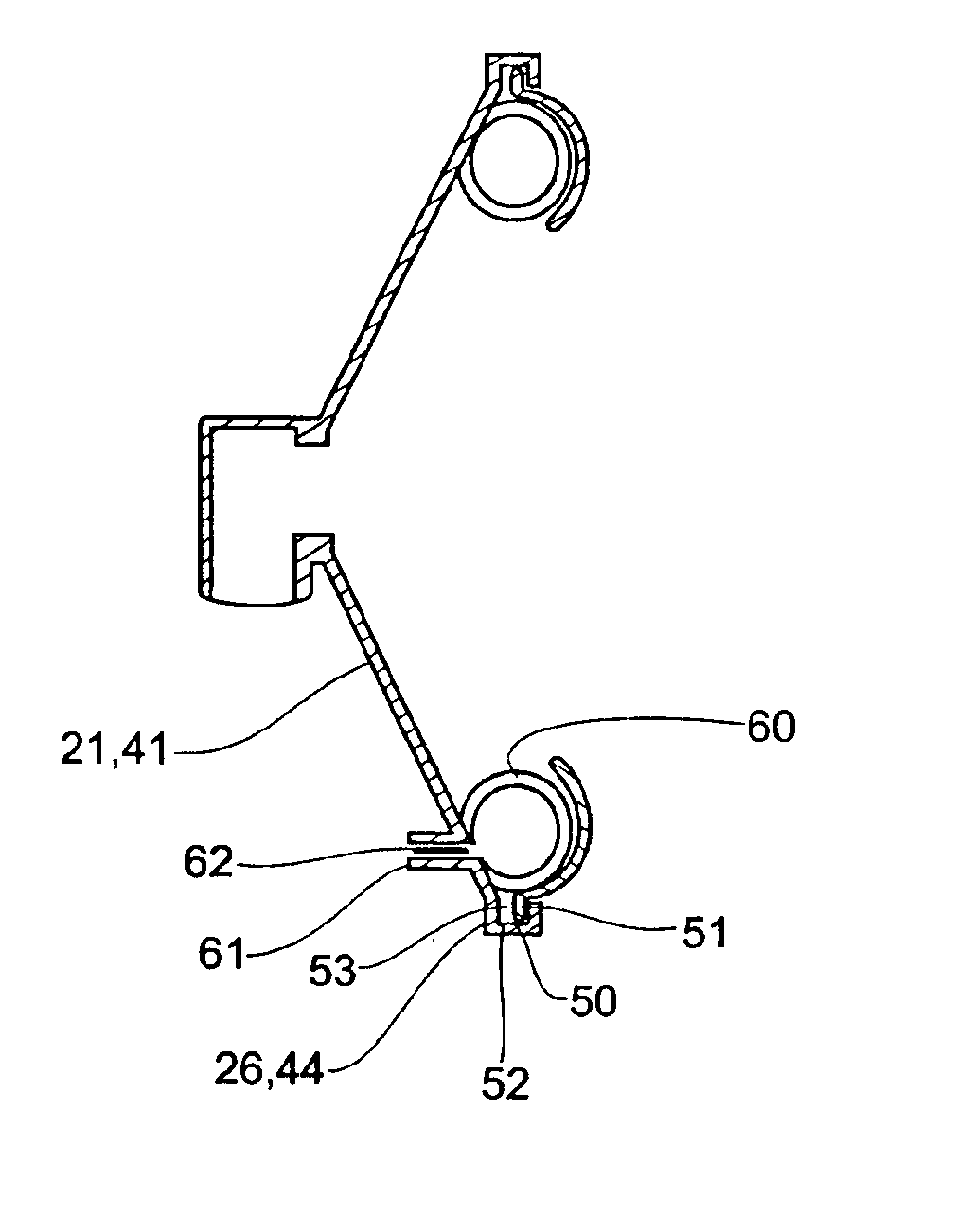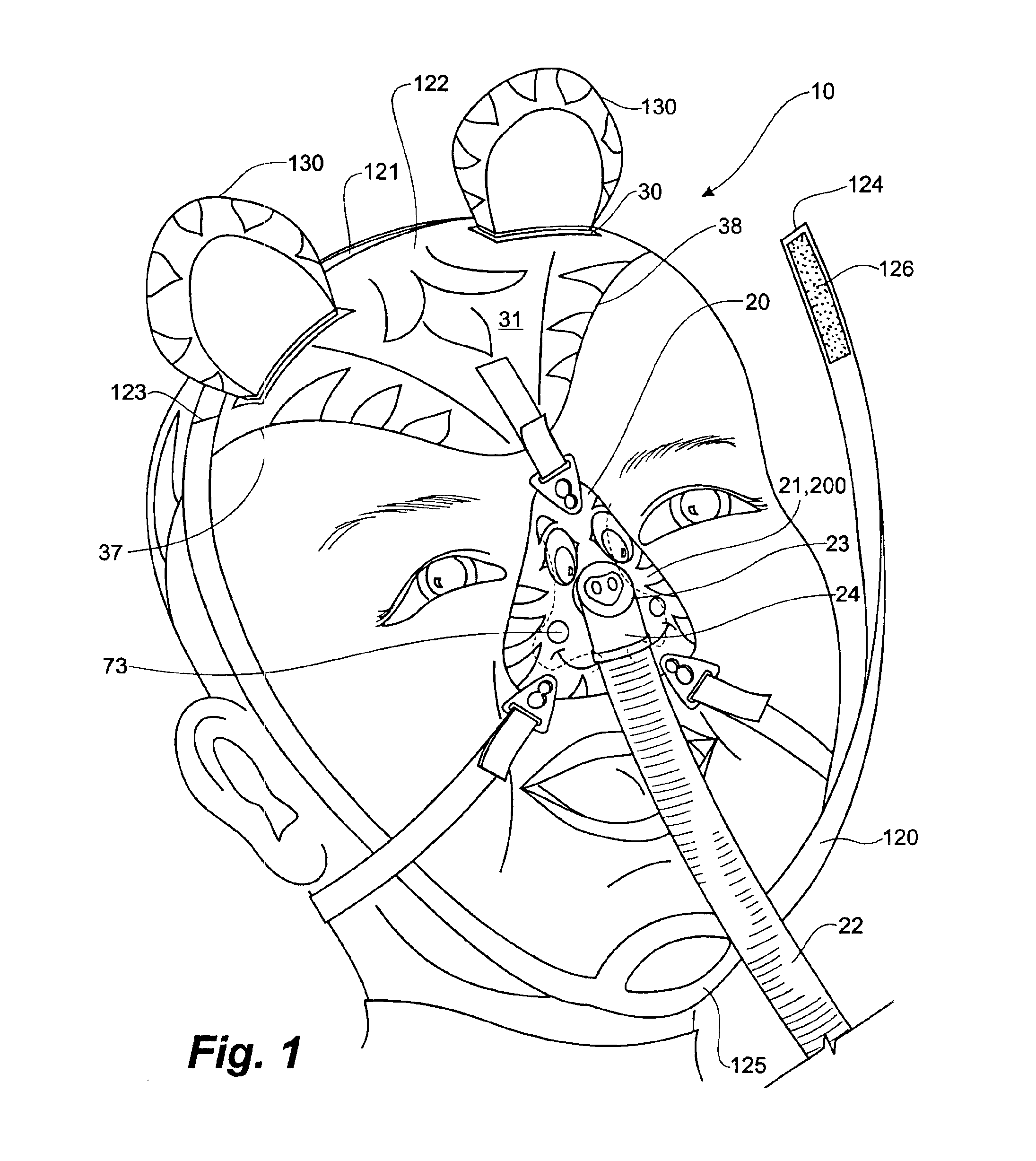Pediatric ventilation mask and headgear system
a mask and headgear technology, applied in the field of nasal and full-face masks and headgear, can solve the problems of uninterrupted sleep, increased difficulty in using it, and increased difficulty for pediatric patients,
- Summary
- Abstract
- Description
- Claims
- Application Information
AI Technical Summary
Benefits of technology
Problems solved by technology
Method used
Image
Examples
example 1
Having reference to FIG. 3, three nasal masks, each having a predetermined size suitable for therapy over the size range of pediatric patients, are shown. The mask shells are ovoid in shape and concave in profile and range in size, the particular sizes being approximately; a small mask, having a height of 5 cm and a width of 4.5 cm at its widest portion; a medium mask having a height of 5.25 cm and a width of 5 cm at its widest portion; and a large mask having a height of 5.75 cm and a width of 5 cm at its widest portion. The masks display caricatures of different animal faces, each face an arbitrary yet consistent size indicator representing the size of mask, for ease of identification and to improve patient compliance. The small mask is a pig, the medium mask is a tiger and the large mask is a dog.
Similarly, as shown in FIG. 4, a full-face mask is provided in two sizes, small and large. The small size is designated as an elephant and the large size is designated as a zebra to impr...
PUM
 Login to View More
Login to View More Abstract
Description
Claims
Application Information
 Login to View More
Login to View More - R&D
- Intellectual Property
- Life Sciences
- Materials
- Tech Scout
- Unparalleled Data Quality
- Higher Quality Content
- 60% Fewer Hallucinations
Browse by: Latest US Patents, China's latest patents, Technical Efficacy Thesaurus, Application Domain, Technology Topic, Popular Technical Reports.
© 2025 PatSnap. All rights reserved.Legal|Privacy policy|Modern Slavery Act Transparency Statement|Sitemap|About US| Contact US: help@patsnap.com



